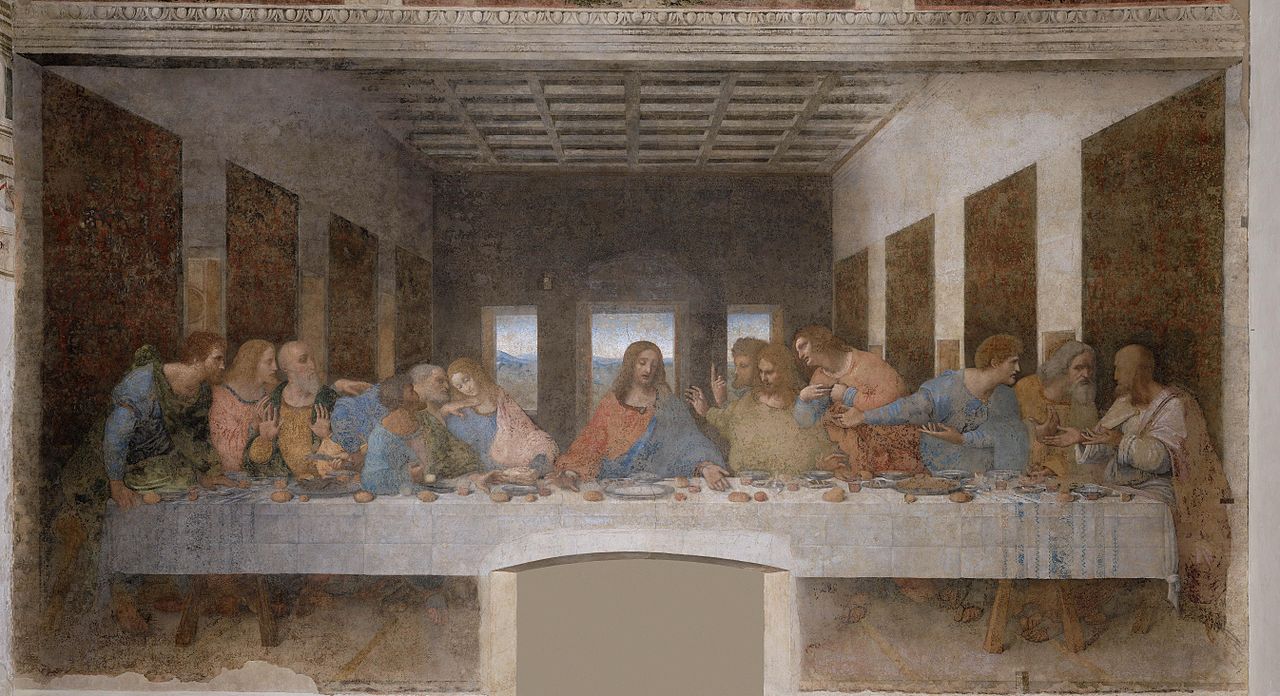

The Last Supper (Italian: Il Cenacolo or L’Ultima Cena ) is a late 15th-century mural painting by Leonardo da Vinci in the refectory of the Convent of Santa Maria delle Grazie, Milan. It is one of the world’s most famous paintings, and one of the most studied, scrutinized, and satirized.
The work is presumed to have been commenced around 1495 and was commissioned as part of a plan of renovations to the church and its convent buildings by Leonardo’s patron Ludovico Sforza, Duke of Milan. The painting represents the scene of The Last Supper of Jesus with his disciples, as it is told in the Gospel of John, 13:21. Leonardo has depicted the consternation that occurred among the Twelve Disciples when Jesus announced that one of them would betray him. All twelve apostles have different reactions to the news, with various degrees of anger and shock. The Last Supper measures 460 cm × 880 cm (180 in × 350 in) and covers an end wall of the dining hall at the monastery of Santa Maria delle Grazie in Milan, Italy. The theme was a traditional one, although the room was not a refectory at the time that Leonardo painted it. The main church building had only recently been completed (in 1498), but was remodeled by Bramante, hired by Ludovico Sforza to build a Sforza family mausoleum. The painting was commissioned by Sforza to be the centerpiece of the mausoleum. The lunettes above the main painting, formed by the triple arched ceiling of the refectory, are painted with Sforza coats-of-arms. The opposite wall of the refectory is covered by the Crucifixion fresco by Giovanni Donato da Montorfano, to which Leonardo added figures of the Sforza family in tempera. (These figures have deteriorated in much the same way as has The Last Supper.) Leonardo began work on The Last Supper in 1495 and completed it in 1498—he did not work on the painting continuously.
Due to the methods used, and a variety of environmental factors, as well as intentional damage, very little of the original painting remains today, despite numerous restoration attempts, the last being completed in 1999.
For this work, Leonardo sought a greater detail and luminosity than could be achieved with traditional fresco. He painted The Last Supper on a dry wall rather than on wet plaster, so it is not a true fresco. Because a fresco cannot be modified as the artist works, Leonardo instead chose to seal the stone wall with a double layer of dried plaster. Then, borrowing from panel painting, he added an undercoat of white lead to enhance the brightness of the oil and tempera that was applied on top. This was a method that had been described previously, by Cennino Cennini in the 14th century. However, Cennini had recommended the use of secco for the final touches alone. These techniques were important for Leonardo’s desire to work slowly on the painting, giving him sufficient time to develop the gradual shading or chiaroscuro that was essential in his style.